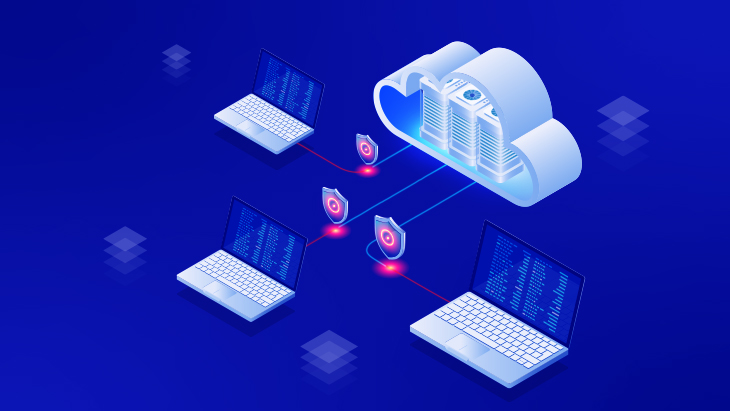
Preventing Cloud Attack Vectors with Privileged Access Management
Cloud computing has brought a lot of benefits to organizations in terms of scalability, flexibility, and cost reduction. Despite its advantages, the cloud has brought about new security concerns due to the fact that cyber attackers are consistently targeting cloud environments. In this blog post, we will explore the various cloud attack vectors and how privileged access management can help prevent them.
Cloud Attack Vectors
-
Data Breaches: Data breaches are one of the most common cloud attack vectors. Attackers target cloud environments to steal sensitive data such as intellectual property, financial records, or customer data. This can happen due to misconfigurations, insider threats, or phishing attacks. For example, a misconfigured S3 bucket could expose sensitive data to the public.
-
Account Hijacking: Account hijacking happens when a user's account is compromised by an attacker, who then uses it to execute additional attacks against the cloud infrastructure. This can happen due to weak passwords, password reuse, or stolen credentials. Once the attacker gains access, they can steal data, install malware, or disrupt cloud services.
-
Malware Injection: Malware injection occurs when an attacker uploads malicious software into a cloud environment. This can happen through various attack vectors such as phishing, social engineering, or exploiting vulnerabilities. Once the malware is injected, it can spread throughout the cloud environment, steal data, or disrupt cloud services.
-
Denial of Service: Denial of service (DoS) attacks occur when an attacker floods a cloud environment with traffic to overload its resources and disrupt its services. This can happen through various attack vectors such as network flooding or application layer attacks. The result is that legitimate users cannot access the cloud environment, causing downtime and lost revenue.
Preventing Cloud Attacks with Privileged Access Management
Privileged access management (PAM) is a critical security control for cloud environments. PAM enables organizations to control and monitor privileged access to cloud resources, such as admin accounts, APIs, and sensitive data. Here are some ways PAM can help prevent cloud attacks:
-
Enforce Least Privilege: According to the principle of least privilege, users should only have permission to access the resources they require to carry out their duties. PAM can enforce least privilege by granting users only the necessary permissions to access cloud resources. As a result, the attack surface is less and the impact of any successful attacks is constrained.
-
Multi-Factor Authentication: Multi-factor authentication (MFA) is a critical security control that helps prevent account hijacking. PAM can enforce MFA for all privileged accounts, such as admin accounts or API keys. This adds an extra layer of security, as attackers would need to have both the password and the MFA token to gain access.
-
Continuous Monitoring: Continuous monitoring is essential for detecting and responding to cloud attacks in real-time. PAM can monitor privileged activity in the cloud environment, such as changes to security groups, API calls, or data access. This enables security teams to identify suspicious activity and respond quickly to prevent further damage.
-
Privileged Session Recording: Privileged session recording is a feature that records all activity during a privileged session. This includes keystrokes, commands, and screen activity. PAM can record privileged sessions in the cloud environment, enabling security teams to review and investigate any suspicious activity. This is a critical security control for detecting and responding to insider threats.
-
Automated Provisioning and Deprovisioning: Automated provisioning and deprovisioning are essential for managing privileged access to cloud resources. PAM can automate the process of granting and revoking access to cloud resources, such as admin accounts or API keys. This ensures that users only have access to cloud resources when they need it, and their access is revoked when they no longer need it.
Cloud environments are constantly being targeted by attackers, and organizations must take steps to prevent cloud attacks. Privileged access management is a critical security control for cloud environments. PAM enables organizations to control and monitor privileged access to cloud resources, such as admin accounts, APIs, and sensitive data. By enforcing least privilege, multi-factor authentication, continuous monitoring, privileged session recording, and automated provisioning and deprovisioning, organizations can prevent cloud attacks and ensure the security of their cloud environments.
One such solution for privileged access management is Kron's PAM solution, Single Connect. Kron's PAM solution provides comprehensive control over privileged access to cloud resources. It enables organizations to enforce least privilege, multi-factor authentication, continuous monitoring, privileged session management and more. With its user-friendly interface and powerful features, Kron's PAM solution is a reliable and efficient tool for preventing cloud attacks and ensuring the security of cloud environments. To learn more about Kron PAM, visit this page and take the first step in securing your cloud environment. Contact us to schedule a demo and see how our PAM solution can benefit your organization. Protect your cloud environment today with Kron's Single Connect.
Other Blogs












